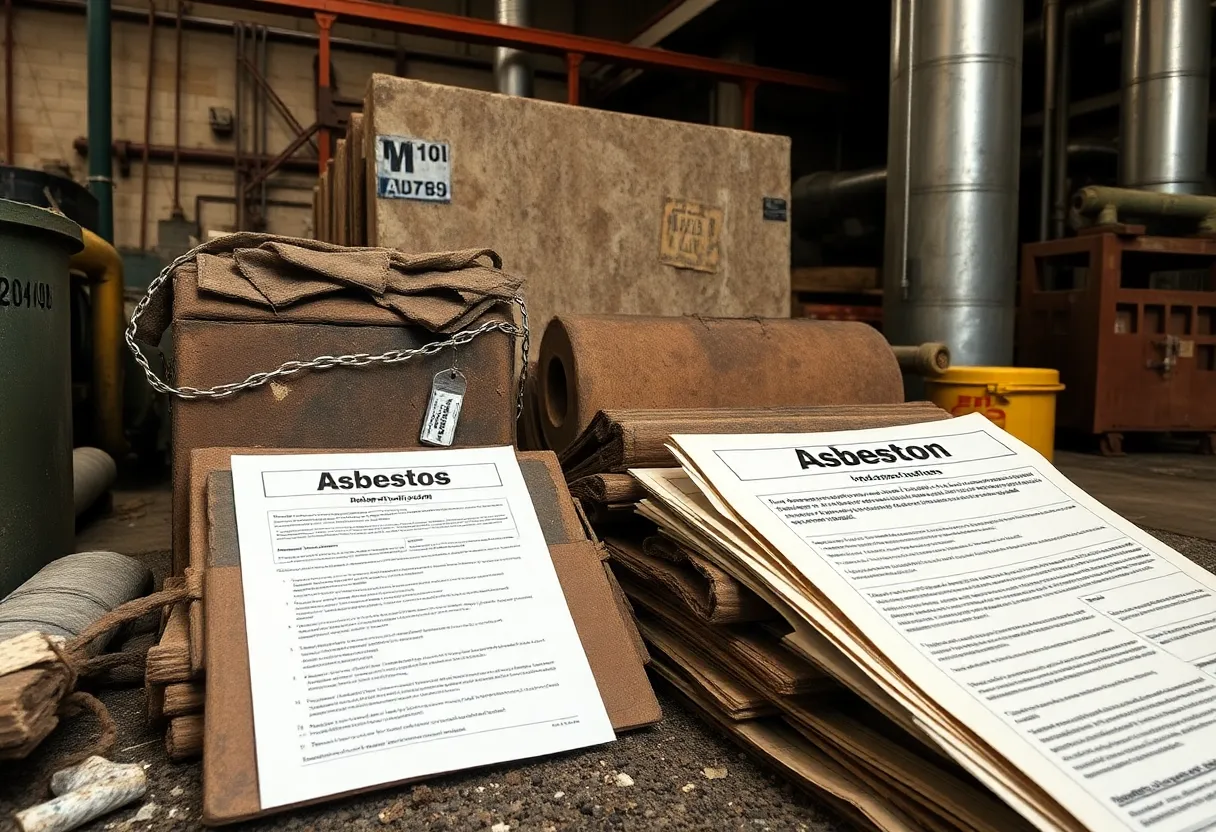News Summary
The EPA is requesting a pause in litigation regarding chrysotile asbestos regulation due to industry concerns, particularly affecting chlorine manufacturers.
EPA Seeks Pause in Asbestos Regulation Litigation Amid Industry Concerns
The battle over chrysotile asbestos regulation in the United States is heating up as the U.S. Environmental Protection Agency (EPA) has filed a motion with the U.S. Court of Appeals for the Fifth Circuit on June 16, 2025. The agency is requesting a six-month pause in litigation concerning a 2024 regulation that aims to phase out the use of chrysotile asbestos, a known carcinogen linked to around 40,000 deaths annually from a variety of serious illnesses, including lung cancer, mesothelioma, ovarian cancer, and laryngeal cancer.
Reassessing the Regulatory Framework
In this motion, the EPA is focused on reassessing parts of the 2024 rule, specifically provisions that impact chlorine manufacturers. These industries have voiced significant concerns regarding the potential implications of a chrysotile asbestos ban on chlorine production processes, which are vital across multiple sectors, including transportation, energy, and health care.
The agency’s proposed regulatory changes are estimated to take approximately two-and-a-half years to finalize. Part of this review will involve determining whether certain aspects of the rule exceed the requirements set forth by the 2016 Toxic Substances Control Act (TSCA) amendments. In addition, the EPA aims to evaluate existing workplace protections included in the regulation that safeguard employees who might be susceptible to asbestos exposure.
Background and Implications of Chrysotile Asbestos Regulation
Chrysotile asbestos is the only form of asbestos still permitted in the U.S. while other countries have enacted comprehensive bans. The World Health Organization (WHO) categorizes all forms of asbestos as carcinogenic, prompting global calls for measures to mitigate exposure. However, the regulation of chrysotile in the U.S. has remained a complex and legally tangled issue, often under the scrutiny of courts.
The Biden administration has also extended the timeframe for chemical manufacturers to phase out asbestos for chlorine production in response to significant concerns raised by water utilities. This extension demonstrates the ongoing tension between health safety measures and industrial needs.
Industry Pushback and Challenges
Trade associations such as the American Chemistry Council (ACC) and companies including Olin Corporation are actively challenging the compliance of the chrysotile regulation with TSCA. They argue that the EPA has failed to refer the regulation of chrysotile asbestos in the workplace to the Occupational Safety and Health Administration (OSHA), a step they claim is required by law.
Furthermore, organizations like the United Steelworkers and various health advocacy groups are sounding alarms, asserting that the EPA’s regulation does not provide adequate protection for public health, particularly for workers in higher risk jobs, such as auto mechanics and factory workers. These individuals may encounter imported parts or industrial equipment still laden with asbestos, placing their safety in jeopardy.
Looking Ahead: The Future of Asbestos Regulation
Given the complex history of asbestos regulation in the U.S., the outcome of the EPA’s reconsideration could significantly influence how asbestos is managed moving forward. The Fifth Circuit’s prior ruling in the case of Corrosion Proof Fittings v. EPA in 1991 reinforced the necessity for the EPA to select the least burdensome regulatory alternative, which may sway future regulations and enforcement strategies.
The current litigation is titled Texas Chemistry Council v. EPA, and with the potential changes and reassessments expected to conclude around mid-December 2027, stakeholders from all sides will be keenly monitoring developments. The final decision resulting from this regulatory pause may well reshape the landscape of asbestos use, particularly in the chlorine manufacturing sector, setting a pivotal precedent for public health and safety standards in industrial applications.
Deeper Dive: News & Info About This Topic
HERE Resources
School District of Philadelphia Faces Federal Charges Over Asbestos Violations
Mounting Concerns Over Asbestos Use in America
Groundbreaking Criminal Charges Against Philadelphia School District Over Asbestos Mismanagement
EPA’s Daring Move: Reconsideration of Chrysotile Asbestos Ban Raises Alarms
The Hidden Dangers of Talc and Its Connection to Cancer Risks
Paradise Hills Pool Shuts Down for Mold and Asbestos Cleanup
South Carolina Supreme Court Delivers Major Blow to Atlas Turner in Asbestos Case
Paradise Hills Pool Set to Make a Splash Again After Closure
Shock Charges Filed Against Philadelphia School District Over Asbestos Hazards
Wallace Family’s Nightmare: Asbestos Scare Forces Evacuation
Additional Resources
- National Law Review: EPA Reconsiders Asbestos Regulation
- Wikipedia: Asbestos
- Mesothelioma.com: What Happens If EPA Removes Asbestos Regulations
- Google Search: EPA asbestos regulation
- Fast Company: The Trump Administration and Asbestos
- Encyclopedia Britannica: Asbestos
- Bloomberg Law: EPA Seeks Changes in Asbestos Rule
- Google Scholar: EPA asbestos regulation



















